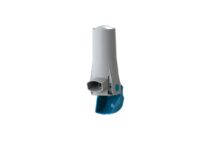The parenteral drug manufacturing process is anchored by the Supply Chain. The impact of COVID-19 has influenced both positively and negatively the production of contemporary parenteral drugs. Many manufacturers have structured their systems around the lean Just-In-Time (JIT) production method, which maintains minimal inventory to match customer demand efficiently.
An issue that emerged in parenteral manufacturing, as well as in other sectors like semiconductors, was inventory stock-outs. The focus on minimal inventory left companies vulnerable to market fluctuations during the pandemic. Nevertheless, JIT production incorporates strategies for predicting demand, potential supply chain disruptions, and other factors, making it resilient. Collectively, Contract Development and Manufacturing Organizations (CDMOs), Contract Manufacturing Organizations (CMOs), and Sponsor companies have invested billions to secure common materials’ inventory. This stockpiling, however, has paradoxically led to further shortages and shipping delays due to the intricate interplay of major players’ actions.
The parenteral drug market, notably dominated by monoclonal antibodies (MAbs) accounting for about 21% of revenue, is expected to expand. A report by Fact.MR predicts that the global parenteral drugs market could exceed $802 billion by 2029. The potential for parenteral administration in advanced therapies, such as vaccines targeting various diseases including certain cancers, continues to grow.
Large molecule drugs make up around 52% of the market, with small molecule therapies representing the remaining 48%. The large molecule segment is projected to increase to about 62% in the coming year, driven by high incremental revenue potential. Parenteral routes are increasingly favored, accounting for 40-50% of New Molecular Entity (NME) drug approvals.
Oncology therapeutics comprise the majority of NMEs in the parenteral sector (27.5%), with a notable presence in infectious diseases (10%) and cardiovascular conditions (~5%). The expanding landscape of disease areas and clinical trial phases offers varied opportunities. The mRNA technology market has rapidly grown, with the market capitalization of top mRNA-focused companies soaring from $15 billion to over $300 billion in two years. Beyond COVID-19, mRNA platforms are poised to produce vaccines for other diseases, including personalized cancer treatments. Public acceptance and trends surrounding this technology remain to be seen.
Given the complexity of pharmaceutical fill-finish processes, partnerships between Sponsors and CDMOs/CMOs have proliferated. Fill-finish constitutes a substantial market segment worth more than $3 billion, projected to grow further as therapies advance in the industry pipeline.
In light of these industry dynamics, participating in the network that delivers next-generation therapies to patients is a humbling endeavor. Understanding the underlying trends behind these developments is crucial for informed decision-making, fostering industry connectivity and preparedness for the evolving landscape of drug production.




















